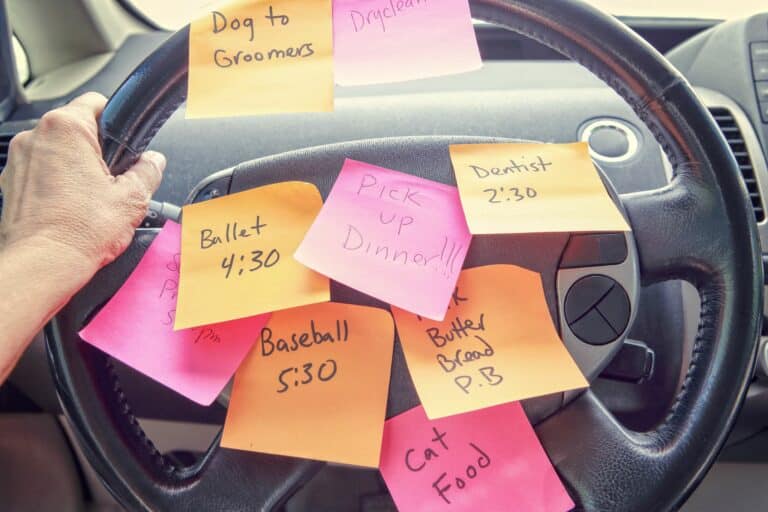Balancing work and parenting when working from home
Working from home has lots of advantages. There’s no commute, you can be much more available for unexpected family circumstances, and the uniform is a lot comfier! But that blending of work and home also creates challenges. With no clear separation, it’s easy to drift into a situation where you are always available to everyone (work and family), always answering emails and never getting a real break. Working parents can find ourselves flitting between parenting and working and never feeling like we have actually finished anything. Or doing both at once (a toddler in one hand, a phone in the other) and feeling like we are failing at everything.
I appreciate that everyone’s circumstances are unique and your options may be limited. But a getting into a few habits that help you to switch off from work and tune into your children will really help when working from home – so you can meet your parenting and professional goals without grinding yourself into a state of total exhaustion.
Here are a few ideas:
Chunk your day
Decide what your work hours will be and set a schedule. If you start a working from home day with a vague plan to get as much done as possible, you will still be working at midnight. Because it will never all be done. Take into account your parenting commitments (such as school drop-offs or after school care) and divide your day into chunks. Reserve any longer chunks for more concentrated work and mark your availability in a diary that your colleagues can view.
Include regular breaks. Get up, move, hydrate. Step away from the screens. Refresh your mind with 5-minute mindfulness moments that engage your senses – run on the spot, dance, sing, stare out of the window (you can do this with the kids if they are around!).
Use a “commute” ritual
When the day is over, close the chapter with a regular transition routine. Think of it as a mini-commute – a natural break that helps you transition out of work-mode. Simple habits like closing the laptop and tidying up your workspace can (if consistently repeated) act as a cue to your brain to let go of work thoughts. Now is a great time to get out of your home and get some physical exercise if you can. Take the dog and/or kids to the park. Or, escape internally for a 10-minute guided meditation to release work stress before stepping into parent-mode. (I find an app like Headspace is really useful for this).
Visualise for quick changes
If you are having to switch frequently between work and parenting throughout the day, a 30 second transition routine can be really helpful. This will make sure you don’t take your efficiency thinking work-mode into parenting (where it will increase your stress levels and probably cause conflict). Quick visualisation exercises are good here. Close your eyes and imagine yourself changing clothes into your Mum/Dad uniform (or into a Spiderman costume if that’s what works for you!). Or, visualise a force field curtained around you. When you step through that imaginary curtain, you will come out the other side as a parent, leaving your work self behind.
If visualisation is not something that comes naturally to you, use an actual visual cue. A photo of your child or a drawing by them that you really like. Something that gives you a fuzzy feeling when you look at it. Spend 30 seconds 100% looking at that picture and allow thoughts of your child and those fuzzy feelings to seep through and do their work. Then you are ready to go and be the parent they need.
Trigger your parent-mode
You can also trigger a transition into parent-mode by doing something silly or fun. Playing with your children is brilliant for this (see Why play is good for parents too). It has to be something you enjoy that gets you fully into the moment (resentfully shuffling Lego pieces around will not do it!). Something a bit manic or physical and totally engrossing is ideal.
Reduce tech intrusions
Once you have bookended your working from home day, avoid getting sucked back in by reducing the number of tech intrusions. How you do this will depend on how much you need to be ‘on call’. You could set your phone to Do Not Disturb (you can always create exceptions or favourites that will ring even when the phone is in silent mode). You could switch the email folder in your phone to just show the Inbox for your personal account (so you don’t see incoming work emails). Turn off notifications. Or create distance between you and the tech by leaving your phone in another room.
Exactly how you draw boundaries around work will depend on lots of factors. But, remember, one of the most important things we need to do for our children is to look after ourselves. To nurture own own well-being and meet our own needs, not just our children’s (or our employer’s).
My book The Work/Parent Switch (known as The Working Parent’s Survival Guide in the US) is a positive parenting guide specifically for working parents. It has lots more details on how to manage the working parenthood juggle in a way that is good for your children and good for your well-being.




